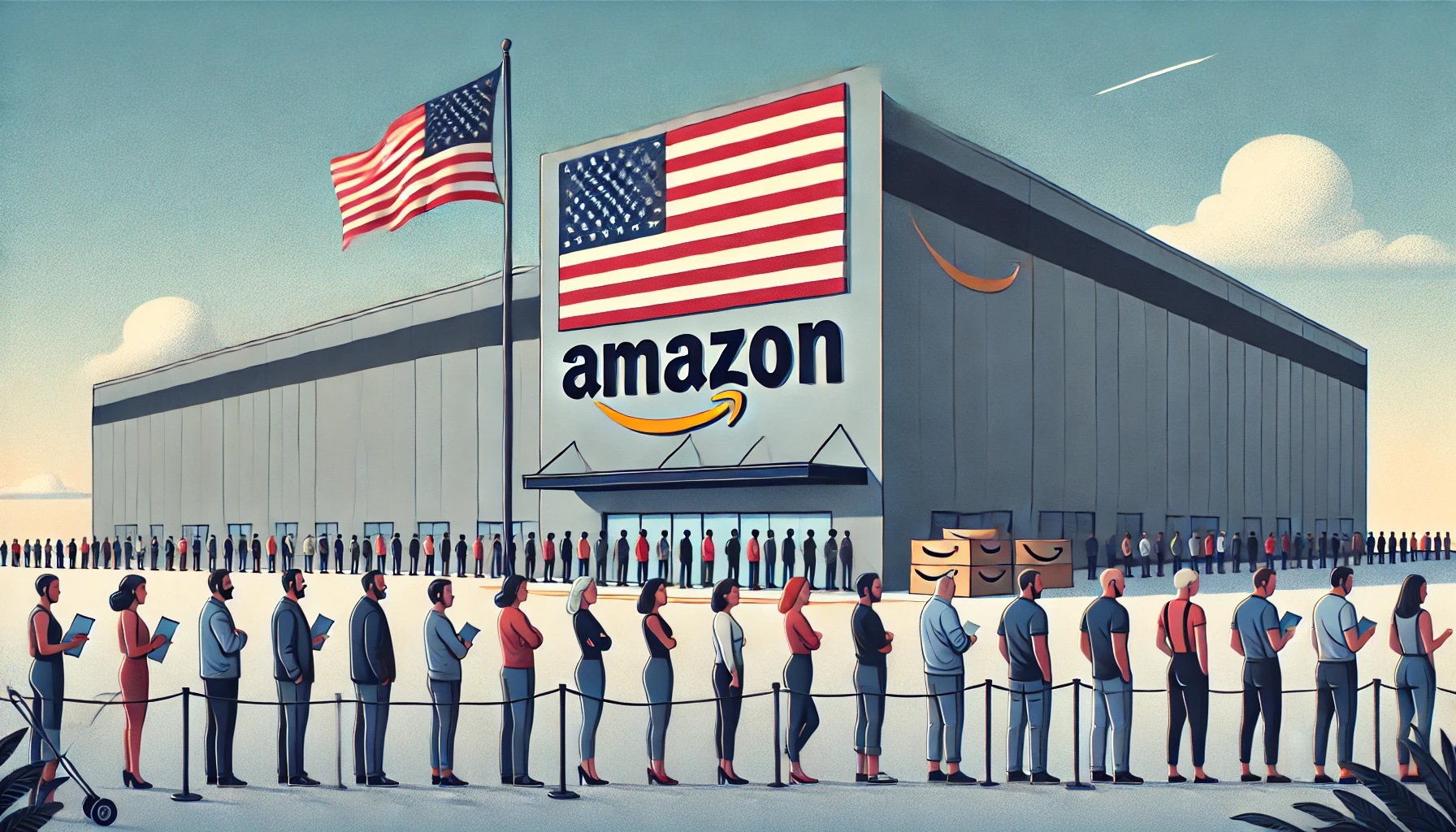What Trump’s Election Win Could Mean for Amazon Sellers
Trump’s win could reshape e-commerce: what sellers need to know to adapt to the potential trade, antitrust, and regulatory shifts!

It’s not a surprise to anyone reading this article that US politics has had a tumultuous last few months. This post is not about politics.
Instead, it’s about next steps.
With Donald Trump’s re-election, policies on trade, antitrust, labor, and environmental regulations may shift, impacting Amazon and its ecosystem of third-party sellers. A new administration could influence Amazon’s operations and shape competition in the e-commerce sector.
Beyond political affiliation, there’s another level of concern. How is this recent election going to affect my Amazon, Walmart, or TikTok Shop e-commerce business?
Here’s what you need to know:
Impact on Amazon
Trade Policies and Tariffs
Trump’s previous focus on tariffs, especially on imports from China, seems very likely to return. Amazon might adapt its supply chain to reduce tariff exposure by seeking suppliers outside China, potentially creating new opportunities for U.S.-based and other international sellers.
Antitrust Scrutiny
Amazon may address antitrust concerns proactively to maintain its position. This could involve structural adjustments or increased lobbying efforts, potentially impacting marketplace rules for third-party sellers. More changes from Amazon? That’s probably not a big surprise,
Regulatory Environment
Labor and environmental regulation changes may reduce Amazon’s operational costs, indirectly benefiting sellers with improved fulfillment efficiency and lower shipping expenses.
Impact on Temu and Shein
Trade Tensions
This could go either way, but, if U.S.- China tensions increase, Temu and Shein might establish a U.S. operations base to bypass tariffs and reduce reliance on Chinese suppliers, possibly improving their market positioning in the U.S.
Data Security and Privacy
To build trust with U.S. consumers, Temu and Shein might adopt stricter data localization and transparency measures around data handling practices.

Effects On the Broader E-Commerce Landscape
Emerging Opportunities for U.S. Platforms
Geopolitical shifts could benefit U.S.-based platforms like Walmart Marketplace, as consumers may prefer domestic brands, prompting a shift toward direct-to-consumer (DTC) channels for Amazon sellers.
Innovation and Technology
A more permissive regulatory environment may increase Amazon’s adoption of AI and automation, enhancing marketplace efficiency. Amazon’s drone delivery efforts could also progress, potentially leading to quicker delivery options for sellers.
Cross-Border E-commerce
New trade agreements may enable Amazon to expand internationally, offering sellers new market access with fewer restrictions.
The Long-term Strategic Implications of the Election
Economic Stimulus
An economic stimulus could increase consumer spending, benefiting e-commerce. That trend could catch fire particularly if sentiment shifts towards U.S.-made products.
M&A Activity
Changes in regulations may lead to increased mergers and acquisitions as companies consolidate. Amazon might acquire firms to strengthen its logistics and market expansion, influencing options for sellers.
Investment in Emerging Technologies
Investment in AR/VR for immersive shopping and blockchain for supply chain transparency may rise, offering sellers innovative ways to stand out.
Geopolitical Considerations
Geopolitical issues may shape e-commerce strategies as companies navigate international risks and regulatory compliance in key markets.

3 Things That Amazon Sellers Can Do to Get Ready
With Donald Trump’s election, Amazon sellers will face significant shifts in trade policies, regulatory changes, and marketplace dynamics.
Here are three essential actions Amazon sellers can take to navigate the evolving landscape:
1. Diversify Supply Chains and Product Sourcing
Reducing dependency on Chinese manufacturers can help sellers minimize risks associated with potential tariffs and trade tensions.
- Explore Alternative Suppliers: Consider suppliers in regions such as Southeast Asia, Latin America, or even the United States. Expanding sourcing options can offer stability in times of trade volatility.
- Build Relationships with U.S.-based Suppliers: Leveraging U.S.-based suppliers not only aligns with a potential “Buy American” sentiment but may also help sellers avoid tariffs and appeal to consumers who prioritize locally sourced goods.
- Evaluate Product Mix: Assess current product offerings and explore categories less vulnerable to trade tensions or tariffs. This diversification can protect sellers from sudden policy shifts and provide a broader range of offerings to customers.
2. Optimize Fulfillment and Delivery Processes
Improving logistics and fulfillment capabilities is going to be essential for all sellers. A slight supply chain disruption can affect everyone. Those who use the Fulfilled by Merchant (FBM) model are particularly vulnerable, especially with Amazon’s increasingly stringent delivery standards.
- Enhance Fulfillment Efficiency: FBM sellers should analyze current logistics operations, identifying areas for improvement to ensure they meet Amazon’s delivery standards. This may include enhancing in-house systems or partnering with third-party logistics providers (3PLs) to streamline processes.
- Invest in Speed and Reliability: Focus on enhancing delivery speed and reliability, as these are crucial for maintaining customer satisfaction and meeting Amazon’s standards. Working with a reliable 3PL can also help handle seasonal fluctuations and high-demand periods effectively.
- Monitor Regulatory Changes: Stay informed about potential shifts in labor and environmental regulations that could affect Amazon’s logistics network. Changes in these areas may indirectly impact sellers by influencing fulfillment efficiency and shipping costs.
3. Expand to Multiple Sales Channels and Consider Direct-to-Consumer Options
Reducing reliance on Amazon and diversifying across platforms can help sellers mitigate risks associated with policy changes while tapping into new customer bases.
- Explore Alternative Sales Channels: Consider expanding to platforms like Walmart Marketplace or emerging options such as TikTok Shop. These channels offer new opportunities to reach audiences and reduce reliance on a single marketplace.
- Develop a Direct-to-Consumer (DTC) Channel: Establishing a DTC channel allows sellers to build stronger customer relationships and own their brand experience. This approach can increase brand loyalty and provide more control over customer interactions.
- Utilize Amazon’s Data Tools: Leverage Amazon’s advanced data analytics tools to gain insights into search behavior, sales trends, and competitive dynamics. This data can guide strategies on and off Amazon, helping sellers make data-driven decisions in all channels.

Frequently Asked Questions:
What tariff changes can e-commerce sellers expect, and how will these affect pricing strategies?
With Trump’s return, there’s a strong chance of increased tariffs, especially on Chinese imports. Sellers may need to adjust their pricing strategies to manage higher costs, impacting both consumer demand and profit margins.
How might Trump’s administration influence antitrust regulations for major tech platforms like Amazon and Meta?
Trump’s administration may adopt a more lenient stance on antitrust, potentially reducing scrutiny on mergers and acquisitions.
What opportunities could arise for U.S.-based manufacturers and suppliers under potential “Buy American” initiatives?
An emphasis on domestic manufacturing may open doors for sellers sourcing from U.S. suppliers, appealing to consumer demand for local products and helping avoid import tariffs.
What role will AI and tech advancements play in shaping e-commerce under Trump’s presidency?
Trump’s administration is expected to promote a business-friendly climate for tech, possibly driving faster advancements in AI and automation. These innovations could help e-commerce sellers boost efficiency and improve customer experience.
How Canopy Can Help
A Trump re-election could lead to a dynamic and evolving landscape for Amazon and e-commerce sellers. Changes in trade policies, regulatory approaches, and technology adoption could present both challenges and opportunities.
Sellers who adapt quickly, diversify their strategies, and remain agile in the face of uncertainty may find themselves in a position to capitalize on emerging trends and establish stronger market positions.
As always, if you’d like to give yourself the same advantage that many of Amazon’s top brands have used to dominate their niche, reach out to the team at Canopy Management.
Canopy Management is a full-service marketing agency for Amazon, Walmart, and TikTok sellers. Our team consists of multi-million dollar, omni-channel entrepreneurs, industry leaders, and award-winning experts.
Ready to Start Growing Your Amazon Brand?
Canopy’s Partners Achieve an Average 84% Profit Increase!
Find out more

